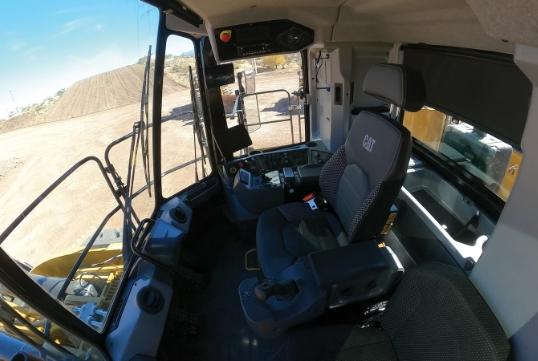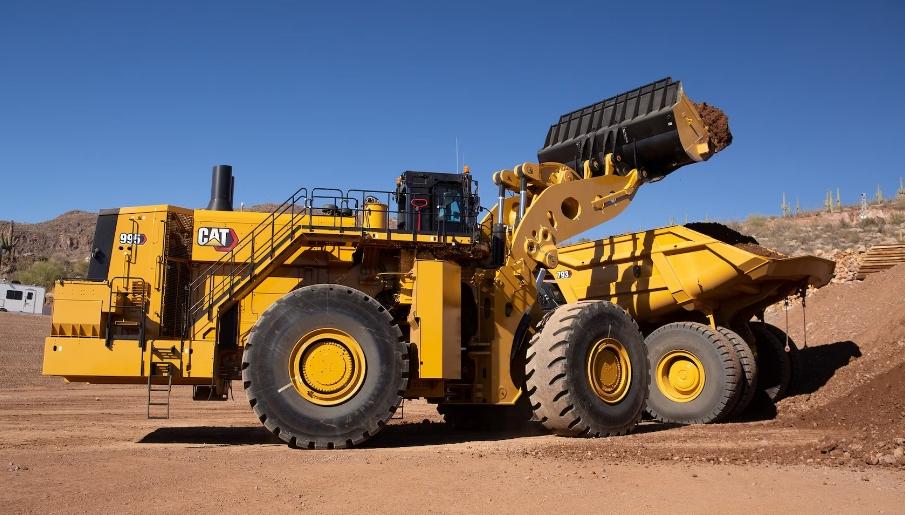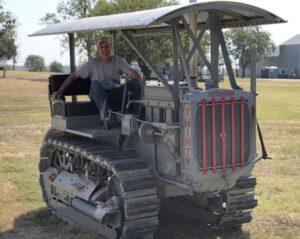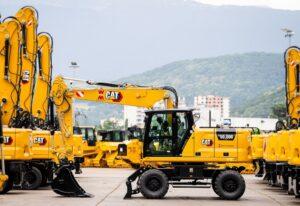While maintaining the same dimensions as its forerunner, the 994K, Caterpillar’s recently unveiled 995 wheel loader is engineered to provide increased payload capacity, enhanced power, and a remarkable 19% surge in productivity—all achieved while consuming less fuel.
Propelled by a potent Cat 3516E engine generating 1,847 horsepower, the 540,555-pound loader boasts a notable 39% surge in torque. This enhancement equips the 995 with substantial lugging capabilities during excavation and acceleration in conditions requiring high rimpull forces.
With its elevated rated payload capacity, the 995 facilitates one-pass loading for Cat 785, 789, and 793 mining trucks, leading to a remarkable 33% surge in production and operational efficiency. Its bucket capacity spans from 22.3 to 57 cubic yards, accommodating a payload of 50 to 60 tons, contingent upon the specific application.
In contrast to its predecessor, according to Cat, the 995 exhibits a notable improvement, with up to 13% reduction in hourly fuel consumption. Furthermore, it presents an additional efficiency enhancement of up to 8% when functioning in Enhanced Eco Mode in comparison to throttle lock mode.
Caterpillar has elevated the performance of the front linkage through enhancements in casting design, augmented weld sizes, enlarged bearings and pins, and profile adjustments, all contributing to an extended service life. Additionally, larger capacity buckets, boasting high-fill factors of up to 115%, are now offered, while maintaining compatibility with the new loader and still accommodating 994K buckets.
Enhanced Operator Environment Design

Within the revamped next-generation cabin, operators can enjoy increased legroom, boasting a 50% expansion, along with an array of enhancements aimed at augmenting comfort and minimizing exhaustion. The cabin’s design incorporates pressurization for decreased vibration and diminished noise levels, complemented by an automatic temperature control system. A novel electrohydraulic speed-sensing steering system with force feedback has been introduced, which automatically firms up during higher speeds and offers a gentler response as the speed decreases.
A duo of 10-inch color LED monitors presents machine controls, operational features, and the electronic operator’s manual, with an additional 8-inch screen dedicated to showcasing the standard rearview camera’s feed. For those who opt for it, a multiview camera system with a comprehensive 270-degree field of vision and rear object detection is an available feature. The windshield has been heightened, coupled with a broader wiper sweep region, resulting in improved visibility towards the bucket.
Access to the cab is facilitated through broad staircases equipped with complete handrails, or alternatively, an optional powered access mechanism can be employed, operable either from the cab itself or from the ground level.
Enhanced Technology Integration
The loader comes equipped with advanced technology, including standard features like Tip Up Prevention, the Vital Information Management System (VIMS), and Product Link. The Tip Up Prevention feature ensures optimal breakout forces while preventing excessive lifting of the rear tires. VIMS grants access to a diverse array of sensor data and improved machine information. Cat’s Product Link offers remote accessibility to machine operational data through the VisionLink interface.
Autodig features, available as options, encompass Tire Slip Prevention, Auto Set Tires, and Lift Stall Prevention. Tire Slip Prevention curtails rimpull before tire setting and augments it upon application of downward force. Auto Set Tires identifies contact with the pile, promptly elevating against it to establish tire positioning and amplify traction. Meanwhile, Lift Stall Prevention effectively controls rimpull during digging phases, thwarting hydraulic stalls during lifting operations.
Optional Operator Coaching proves advantageous for inexperienced operators. This interactive training tool observes and evaluates 21 distinct operating techniques, offering informative videos that address specific operator actions, thereby enhancing both performance and productivity.
The option of Payload Overload Prevention ensures that when the total permissible payload, incorporating the weight of the bucket, is surpassed, the lift arms are either brought to a halt or slowed down.
The 995 also provides compatibility with several Cat MineStar solutions, including Health, Guide, and Terrain.
Enhanced Maintenance Efficiency
The 995 boasts a 500-hour interval for engine oil changes, extended air filter lifespan, and a reduced number of steering hoses. These attributes collectively contribute to minimized maintenance requirements and enhanced reliability.
The revamped pump bay design provides improved accessibility to transmission components, positions discharge ports at the sides of the pumps, and streamlines the routing of lines directly to the high-pressure screens. Maintenance is further facilitated by the front walk deck and pump bay, granting easy access to the brake pump filter, implement pilot filter, implement discharge screens, and diagnostic ports.
Groundline servicing has been expanded to encompass a steering pilot filter, transmission filters, and a steering pump discharge screen.



